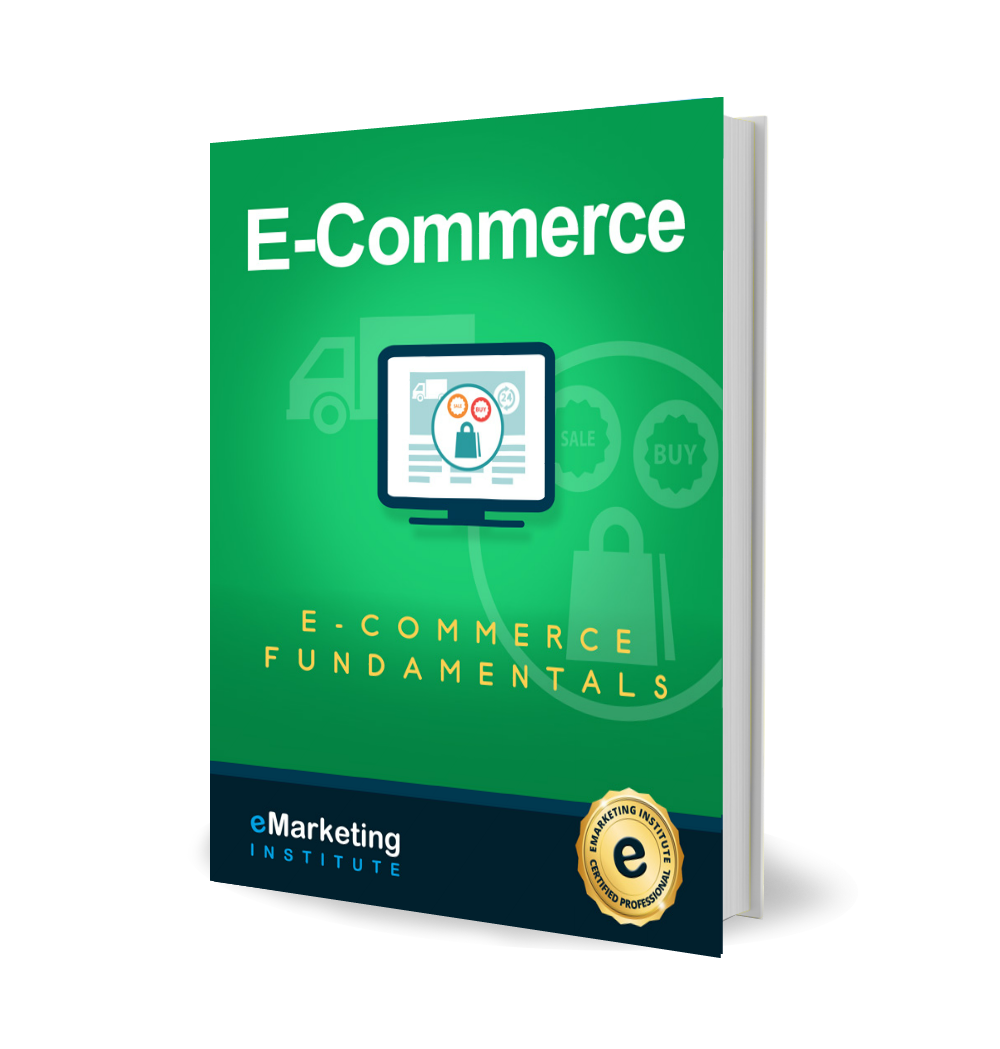Chapter content
The opening chapter of the course is focused on buyers and sellers and their place in e-commerce. The relevant statistics highlight two major concepts: e-commerce market is rapidly growing and the fact that understanding the behavior of digital buyers is important to succeed with e-commerce.
From this section, you will learn what e-commerce is, about the advantages and disadvantages of having an e-commerce business, etc. A brief history of e-commerce is meant to show you how the massive expansion of the internet has become a ground for the development of e-commerce as an industry.
When you think about setting up an e-commerce business, think of a business plan as your starting point. This plan will be a foundation upon which you will build your e-commerce business. The major concepts covered in the business plan are grouped into three categories: essentials, product information and investment. Additional details that can be included in the business plan are also included here, along with the benefits of having a business plan in the first place.
The legal aspect of running your e-commerce business helps you define and regulate your relationship with the customers. It helps you provide seamless cooperation and instructions on how to deal with potential issues. A special attention is devoted to trademark registration, defining the terms of use, refund and privacy policy.
5. Having a E-Commerce Website
Find out what having an e-commerce website really requires. From choosing a CMS platform to designing the actual site pages, store and product pages, to a shopping cart, shipping methods and payment gateways, this chapter includes everything you need before you can set up an e-commerce website.
6. Choosing an E-Commerce Platform
E-commerce platform is a website integration that helps you manage your online store. Multiple e-commerce platforms are available, and this chapter presents some of the most popular on the market together with the features each of them comes with.
7. How to Promote Your Business
Promotion of your e-commerce business will be an inseparable part of your workflow. In this chapter, you will find out about different methods for promotion, both free and paid, that can help you boost sales in your online store.
8. Strategies to Increase Sales
In this section, you will find out about three most commonly used strategies to increase sales. You will also get a quick guide on how to use each of them to start getting the results fast.
Optimization of your product pages is an essential task if you want to attract organic traffic. This is why understanding the basics of SEO for e-commerce is one of the tasks you should focus on. Keyword research, site structure, on-site SEO, and link building are analyzed from the point of view of the e-commerce and how these should be used to improve organic visibility and traffic.
10. Common Issues with E-Commerce SEO
A couple of issues might occur during the process of optimization of an e-commerce website. Duplicate content is certainly the one that occurs the most, but there might be other problems as well. This is why it is helpful to be aware of those and how you can deal with them.
In this chapter, you will find out about aspects relevant in the process of optimizing your website for mobile devices. Since the significant percentage of traffic comes from mobile devices, this section of the course is quite relevant in the process of website optimization and improving the user experience.
12. Exploring Online Marketplaces
The ease of use and power to make your products available to the existing customers are often the reasons why people decide to sell on online marketplaces. Besides the differences between marketplaces and having your own e-commerce website, you will also learn about selling on Amazon and eBay, two of the most popular online marketplaces.
Understand customers, their user experience and buying process are all crucial for improving your business strategy, and drastically increasing sales. In this chapter, you will also learn about types of customers and buyer persona.
Some of the used terminologies might be unfamiliar to you, which is why this chapter offers further details about relevant terms for understanding the course.
You will reinforce your knowledge of e-commerce with this questionnaire. Featuring 50 multiple-choice questions, this segment of the course will help you pay attention to the most important concepts covered in this course.
This section of the course wraps up the topic with an analysis of whether an e-commerce business is the one for you. It also stresses the fact that exploring online marketing is very important to succeed with e-commerce.

